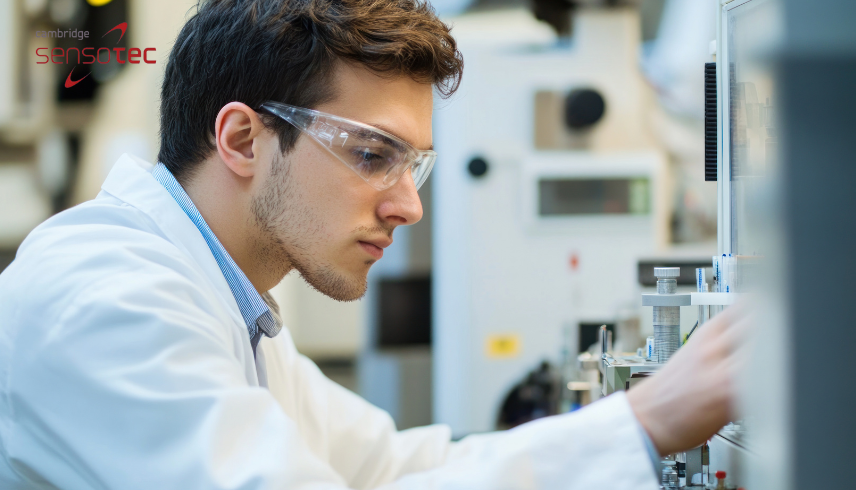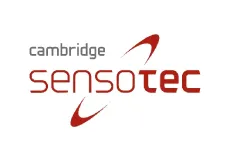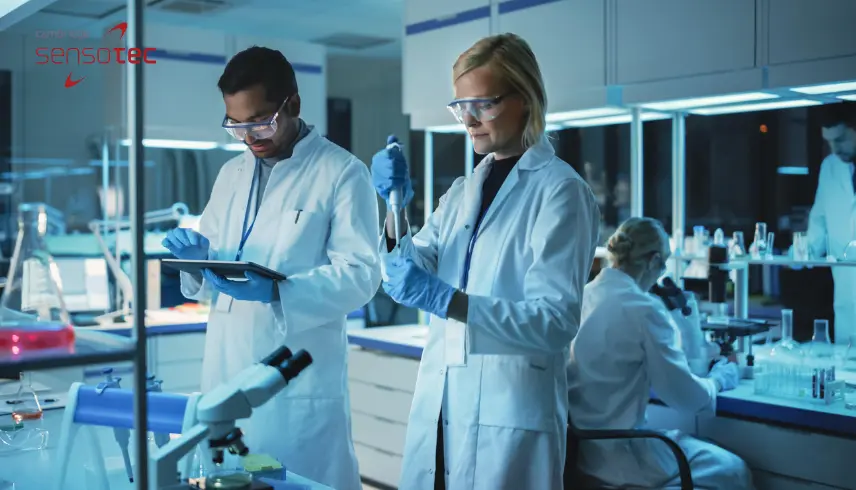

Achieving Precision in Argon Gas TIG Welding
Introduction
Argon gas TIG welding, or Tungsten Inert Gas welding, is a specialist technique known for its precision and clean welds. Unlike other welding processes, TIG welding utilises a non-consumable tungsten electrode, and argon gas plays a pivotal role in shielding the weld from atmospheric contaminants. Precision in welding is crucial, particularly in industries where the integrity of the weld can impact safety and functionality. This article delves into the intricacies of argon gas TIG welding, exploring how to achieve the highest levels of precision in your work.
Understanding Argon Gas in TIG Welding
What is Argon Gas?
Argon is a noble gas, colourless, odourless, and completely inert. It does not react with other elements under most conditions, making it an ideal shielding gas in welding applications. Argon is the third most abundant gas in the Earth’s atmosphere, accounting for about 0.93% by volume. This abundance and its inert properties make it a popular choice in various industrial processes, including TIG welding.
Why Argon is Preferred in TIG Welding
In TIG welding, the choice of shielding gas is critical to the quality of the weld. Argon is preferred due to its stable arc and effective protection against atmospheric contamination. Unlike other gases, argon does not affect the weld pool’s characteristics, allowing for greater control over the welding process. Its density, which is higher than air, ensures that it effectively displaces oxygen, nitrogen, and hydrogen, which could otherwise lead to weld defects.
Role of Argon in Achieving Precision
Shielding the Weld from Contaminants
The primary function of argon in TIG welding is to shield the weld pool from atmospheric contaminants. Exposure to oxygen and nitrogen can cause oxidation and porosity, compromising the weld’s integrity. By creating an inert atmosphere, argon prevents these gases from reacting with the molten metal, ensuring a cleaner, more precise weld.
Providing a Stable Arc
A stable arc is essential for precision in TIG welding. Argon contributes to a stable arc by maintaining consistent electrical conductivity between the electrode and the workpiece. This stability allows the welder to maintain a controlled and focused heat input, crucial for delicate or thin materials.
Reducing Oxidation
Oxidation is a common issue in welding that can weaken the weld and lead to defects. Argon’s inert properties significantly reduce the risk of oxidation by preventing the metal from reacting with oxygen. This results in a cleaner weld that requires less post-weld cleaning and finishing.
The TIG Welding Process
Basics of TIG Welding
TIG welding uses a tungsten electrode to produce the weld. The welder creates an arc between the tungsten electrode and the workpiece, which melts the base material. Filler material may be added to the weld pool if required, though TIG welding can also be performed autogenously (without filler). Argon gas is delivered through the torch, enveloping the weld area to prevent contamination and ensure a clean, precise weld.
Components of TIG Welding Equipment
Key components of TIG welding equipment include the welding torch, power supply, and the shielding gas supply. The torch holds the tungsten electrode and directs the argon gas onto the weld area. The power supply controls the arc, and the shielding gas supply ensures a continuous flow of argon to protect the weld.
Importance of Argon Gas in TIG Welding
Shielding Effect
The shielding effect of argon gas is crucial to the success of TIG welding. Without adequate shielding, the weld pool would be exposed to the atmosphere, leading to defects such as porosity, cracks, and oxidation. Argon ensures that the weld area remains protected from these contaminants, resulting in a higher quality weld.
Controlling the Arc and Heat Input
Argon gas helps control the arc and heat input during the welding process. A stable arc means that the welder can apply heat more precisely, which is essential for welding thin materials or intricate joints. This control is particularly important in applications where even slight variations in heat can lead to distortion or burn-through.
Common Applications of Argon Gas TIG Welding
- Aerospace: In the aerospace industry, where safety and precision are paramount, TIG welding with argon is often used for welding thin materials and critical components. The process allows for precise control over the weld, ensuring the structural integrity of the parts.
- Automotive: The automotive industry also relies on TIG welding for high-quality, precision welds, particularly in the fabrication of exhaust systems and other components where durability is essential. The clean welds produced by TIG welding reduce the need for extensive finishing, saving time and costs.
- Industrial Fabrication: In industrial fabrication, TIG welding is used for a wide range of applications, from the construction of pressure vessels to the assembly of intricate machinery. The ability to produce strong, precise welds makes it a preferred method in situations where quality cannot be compromised.
Key Factors in Achieving Precision in Argon Gas TIG Welding
Proper Gas Flow Rates
The flow rate of argon gas is a critical factor in TIG welding. Too low a flow rate may not provide adequate shielding, while too high a flow rate can cause turbulence, leading to weld defects. The correct flow rate depends on factors such as the size of the nozzle, the welding current, and the environment. Generally, a flow rate of 10-20 cubic feet per hour (CFH) is recommended for most applications.
Incorrect flow rates can lead to a range of issues. A low flow rate may result in insufficient shielding, allowing contaminants to reach the weld pool. Conversely, a high flow rate can cause the gas to mix with the surrounding air, introducing oxygen and nitrogen into the weld, leading to porosity and oxidation. Maintaining the correct flow rate is essential for achieving consistent, high-quality welds.
Electrode Selection and Preparation
Types of Electrodes
Tungsten electrodes are available in various types, each with different properties suited to specific applications. Common types include pure tungsten, thoriated tungsten, ceriated tungsten, and lanthanated tungsten. The choice of electrode affects arc stability, starting ease, and overall weld quality.
Sharpening and Maintenance
Proper electrode preparation is crucial for precision welding. The electrode tip should be ground to a sharp point for direct current (DC) welding, while an even, rounded tip is better for alternating current (AC) welding. Consistent maintenance of the electrode ensures a stable arc and reduces the risk of contamination.
Torch Handling Techniques
Maintaining a Consistent Arc Length
Maintaining a consistent arc length is essential for controlling the heat input and ensuring a uniform weld. A short arc length concentrates the heat, which is beneficial for welding thin materials, while a longer arc length distributes the heat over a broader area, reducing the risk of burn-through.
Angle and Position of the Torch
The angle and position of the torch influence the shape and quality of the weld. Typically, the torch should be held at a 10-15 degree angle from vertical, pointing in the direction of travel. This position allows for optimal gas coverage and helps control the shape of the weld bead.
Controlling Heat Input
- Pulse Welding: Pulse welding is an advanced technique that involves cycling the welding current between high and low levels. This method reduces the overall heat input, making it ideal for welding thin materials or heat-sensitive alloys. Pulse welding also helps control the weld pool, resulting in more precise welds.
- Adjusting Amperage: Adjusting the amperage is another way to control heat input during TIG welding. Lower amperage settings are used for thin materials, while higher settings are needed for thicker sections. By carefully controlling the amperage, the welder can achieve a precise balance between penetration and heat input, reducing the risk of distortion.
Welding Environment
Importance of Cleanliness
Cleanliness is paramount in achieving precision in TIG welding. Contaminants such as oil, grease, and dirt can cause weld defects and reduce the quality of the weld. Both the workpiece and the electrode should be thoroughly cleaned before welding to ensure optimal results.
Effects of External Factors (e.g., Wind, Drafts)
External factors such as wind and drafts can affect the shielding gas coverage, leading to weld contamination. Welding in a controlled environment, free from drafts, is ideal. If welding outdoors, wind shields or higher gas flow rates may be necessary to maintain adequate protection.
Troubleshooting Common Issues in Argon Gas TIG Welding
Inadequate Shielding Gas Coverage
Causes and Solutions
Inadequate shielding gas coverage can result from low flow rates, damaged gas hoses, or incorrect torch positioning. Ensuring that the gas flow rate is correct and that all equipment is in good condition can help prevent this issue. Additionally, the torch should be positioned correctly to ensure full coverage of the weld pool.
Contaminated Welds
Preventing Contamination
Contamination can occur if the workpiece, electrode, or filler material is not properly cleaned before welding. Using clean, dedicated tools and materials for each job is essential. Regularly inspect and clean the welding equipment to prevent contamination and ensure high-quality welds.
Inconsistent Arc Stability
Factors Affecting Arc Stability
Arc stability can be affected by several factors, including incorrect electrode preparation, improper torch handling, and variations in gas flow. To improve arc stability, ensure that the electrode is correctly sharpened, the torch is held steadily, and the gas flow is consistent.
Solutions to Improve Stability
To enhance arc stability, regularly inspect the tungsten electrode for wear and ensure that it is properly sharpened. Maintaining a consistent torch angle and distance from the workpiece can also help.
Adjusting the gas flow rate to suit the specific welding conditions will further improve stability.
Porosity in Welds
Identifying Causes
Porosity, or small gas pockets within the weld, can be caused by inadequate gas shielding, contamination, or incorrect welding techniques. Identifying the root cause is essential for preventing porosity.
Methods to Prevent Porosity
To prevent porosity, ensure adequate gas coverage by checking the flow rate and inspecting the torch for damage. Clean the workpiece thoroughly before welding and avoid overheating, which can introduce gases into the weld pool. Consistent welding techniques and proper equipment maintenance are key to reducing the risk of porosity.
Advanced Techniques for Enhanced Precision
Using Back Purging Techniques
Back purging involves supplying argon gas to the backside of the weld joint, which is particularly important when welding stainless steel or titanium. This technique prevents oxidation on the underside of the weld, ensuring a clean, strong joint.
How to Implement Back Purging Effectively
To implement back purging effectively, the purge gas flow rate should be controlled to avoid turbulence. The weld joint should be sealed to contain the argon gas, and purging should continue until the weld area has cooled sufficiently to prevent oxidation.
Applying Pulse TIG Welding
Benefits of Pulse Welding
Pulse welding offers several benefits, including reduced heat input, better control of the weld pool, and the ability to weld thin materials more precisely. This technique is particularly useful in applications where heat management is critical.
Pulse settings, such as peak current, background current, and pulse frequency, should be adjusted based on the material being welded. For thin materials, lower peak currents and higher frequencies are typically used to minimise heat input and prevent distortion.
Dual Gas Shielding Methods
Benefits and Applications
Dual gas shielding involves using two shielding gases, such as argon and helium, to optimise the welding process. This method can enhance weld penetration, increase arc stability, and improve the overall quality of the weld. It is particularly useful in applications requiring deep penetration or when welding reactive metals.
How to Set Up Dual Gas Shielding
Setting up dual gas shielding requires careful calibration of the gas flow rates and torch configuration. The primary gas, usually argon, provides the shielding, while the secondary gas, such as helium, enhances arc characteristics. Adjusting the ratio of these gases allows for precise control over the welding process.
Safety Considerations in Argon Gas TIG Welding
- Proper Ventilation and Fume Extraction: Ventilation and fume extraction are critical in any welding environment to protect the welder from harmful fumes and gases. Proper ventilation systems should be in place to remove fumes from the welding area, particularly in enclosed spaces.
- Use of Personal Protective Equipment (PPE): Personal Protective Equipment (PPE) is essential for safety in TIG welding. This includes a welding helmet with appropriate shading, gloves, protective clothing, and safety shoes. PPE protects the welder from UV radiation, heat, and sparks, reducing the risk of injury.
Handling of Argon Cylinders
Storage Guidelines
Argon cylinders should be stored in a cool, dry are with proper ventilation, away from direct sunlight and sources of heat. Cylinders should be secured upright to prevent tipping and should be kept away from flammable materials.
Safe Handling Practices
When handling argon cylinders, it is important to use appropriate equipment, such as cylinder trolleys, to prevent injury. You should regularly check cylinders for leaks, and the regulator should be properly attached before use. Always close the cylinder valve when not in use to prevent accidental release of gas.
Innovations and Future Trends in Argon Gas TIG Welding
Advances in TIG Welding Technology
Digital Controls and Automation
Advances in TIG welding technology, such as digital controls and automation, are revolutionising the industry. Digital controls allow for precise adjustments to welding parameters, improving consistency and reducing the likelihood of human error. Automation is also becoming more prevalent, enabling high-volume production with consistent quality.
Improvements in Argon Gas Delivery Systems
Innovations in argon gas delivery systems are enhancing efficiency and reducing gas consumption. New delivery methods, such as on-demand gas flow systems, ensure that argon is used efficiently, minimising waste and reducing costs.
Emerging Materials and Their Impact on TIG Welding
New Alloys
The development of new alloys presents both challenges and opportunities for TIG welding. These materials often require specialised techniques and equipment to weld effectively. Understanding the properties of these alloys and how they interact with argon gas is crucial for maintaining precision.
Lightweight Materials
The use of lightweight materials, particularly in industries such as aerospace and automotive, is driving the need for more precise and controlled welding techniques. TIG welding, with its ability to produce high-quality welds with minimal distortion, is ideal for these materials.
Sustainability and Argon Gas Conservation
Efficient Use of Argon
As industries become more focused on sustainability, the efficient use of argon gas is becoming increasingly important. Techniques such as optimising gas flow rates and using advanced delivery systems can reduce argon consumption, lowering costs and environmental impact.
Recycling and Reusing Argon Gas
Recycling and reusing argon gas is an emerging trend aimed at reducing waste and conserving resources. Closed-loop systems that capture and purify used argon for reuse are being developed, offering potential cost savings and environmental benefits.
Summary
Achieving precision in argon gas TIG welding requires a deep understanding of the welding process, the properties of argon, and the techniques involved. By mastering the factors that influence weld quality, from gas flow rates to torch handling and heat control, welders can produce clean, precise welds that meet the highest standards. As technology continues to advance, and new materials emerge, the principles of precision welding will remain critical to success in the field. By staying informed and continually refining their skills, welders can ensure they can meet the challenges of the future.
Contact our team today to learn more about our Argon Analyser solutions.


